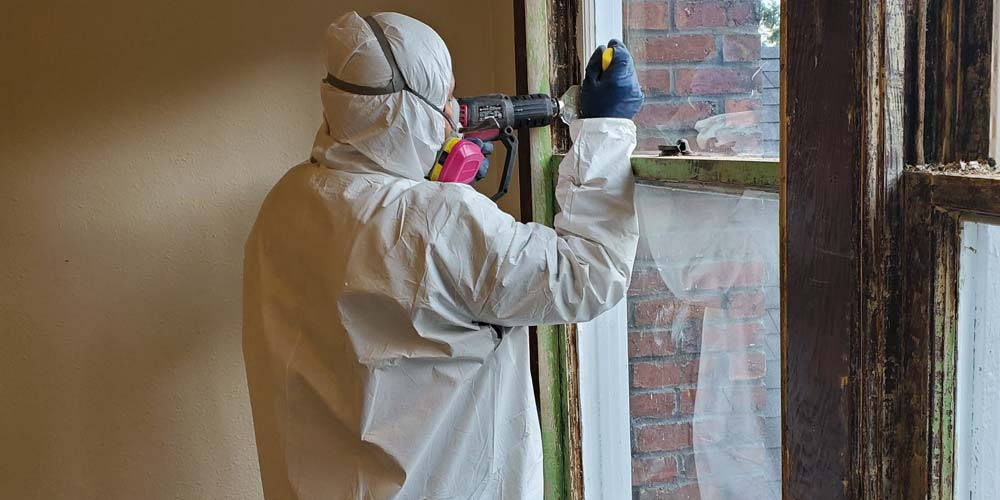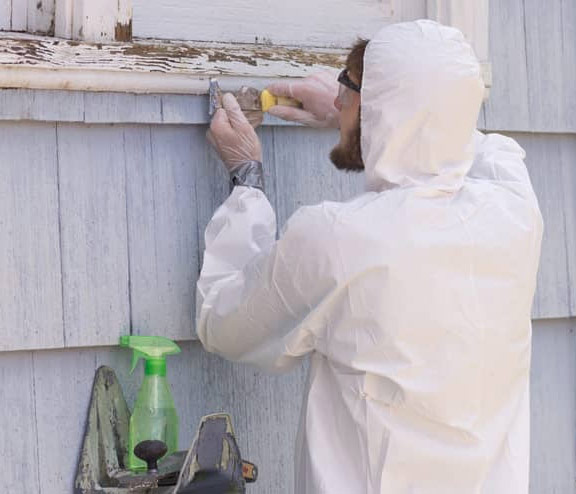Relied On Lead Paint Removal Company-- NYC's Premier Lead Abatement Service
Relied On Lead Paint Removal Company-- NYC's Premier Lead Abatement Service
Blog Article
Comprehensive Guide on Effective Lead Violation Removal Strategies
In the world of ecological safety, attending to lead offenses demands a careful and structured strategy. This comprehensive guide begins by highlighting the important first steps of identifying lead dangers through advanced analysis and screening methods. The guide clarifies on the value of sticking to stringent safety and security protocols during the removal procedure, consisting of the use of correct PPE and separating affected areas.
Recognizing Lead Hazards
Recognizing lead hazards is an essential very first step in reducing the dangers related to lead exposure. Lead, a harmful metal, can be existing in different ecological tools, consisting of paint, dirt, water, and dirt. It positions extreme health dangers, especially to youngsters and pregnant ladies, bring about neurological damages and developing delays. Exact recognition of possible lead resources is essential for effective remediation.
The first phase in identifying lead risks includes comprehending typical lead sources within the developed atmosphere. Frameworks built before 1978 are specifically at risk as a result of the widespread usage of lead-based paint throughout that duration. Furthermore, dirt contamination can occur from weakening outside paint, commercial exhausts, or historic use leaded gas.
An additional substantial resource is lead piping and plumbing fixtures, which can seep lead right into alcohol consumption water. Consumer goods such as playthings, porcelains, and imported items might likewise have unsafe lead degrees. Notably, occupational atmospheres and pastimes involving lead can track contaminants right into homes.
Evaluation and Testing
When dealing with lead threats, reliable evaluation and screening are vital. Initial evaluation normally includes a visual examination to recognize potential lead sources, such as deteriorating paint or polluted dirt.

Dirt clean sampling is another important strategy, particularly in domestic settings. By gathering examples from floorings, windowsills, and various other surface areas, this approach offers insights into prospective direct exposure threats. Soil screening around structure boundaries is necessary to identify lead contamination that can posture threats, specifically to youngsters.
Safe Removal Treatments
Upon finishing thorough analysis and screening, applying risk-free removal procedures is the next critical phase in dealing with lead hazards. This process makes certain that lead-contaminated products are successfully and safely eradicated, minimizing threat to both employees and residents. The primary step includes separating the afflicted location utilizing plastic sheeting and correct sealing strategies to stop the spread of lead dust.
Workers should wear ideal individual protective tools (PPE), including respirators, gloves, and non reusable coveralls, to reduce direct exposure. Utilizing specialized tools and damp methods, such as damp sanding or utilizing HEPA-filtered vacuum cleaners, decreases the diffusion of lead bits. It is essential to prevent completely dry fining sand or abrasive blowing up, as these methods can produce hazardous lead dirt.
Waste disposal is an additional essential element; all contaminated materials must be safely landed and identified according to EPA and neighborhood policies. In addition, extensive cleaning of the workspace with HEPA vacuum cleaners and damp wiping makes sure the removal click here now of residual lead fragments.
Post-Removal Verification

Verification of successful lead removal, referred to as post-removal confirmation, is crucial to make certain the safety and habitability of the remediated location. This procedure entails a series of meticulous evaluations and examinations made to detect any type of recurring lead fragments that might pose health threats. The first step usually consists of an aesthetic examination to assess the completion and quality of the remediation work. This examination ensures that all known sources of lead have been dealt with and that no visible indications of contamination stay.
Following the aesthetic examination, ecological tasting is carried out. This involves collecting dirt, soil, and in some cases water samples from the remediated area. Approved labs analyze these examples to gauge lead degrees, Lead Removal Contractors guaranteeing they fall listed below the safety and security limits established by regulatory bodies such as the Epa (EPA)
In addition, air quality testing might be executed to identify air-borne lead particles, especially in instances where substantial lead-based paint removal or renovation has actually taken place. The results of these tests supply quantitative information verifying that the lead levels are within permitted limitations.
Ultimately, post-removal confirmation functions as an important checkpoint, validating the performance of the lead abatement initiatives and protecting the wellness of passengers and visitors.
Precautionary Measures and Maintenance

A vital precautionary action includes the usage of lead-safe certified service providers for any restoration, repair, or painting tasks. These experts are educated in practices that lessen lead dust and debris. Furthermore, keeping painted surfaces to stay clear of blog here chipping or peeling off is essential, as degrading paint can launch lead particles into the atmosphere.
Educational campaigns targeting home proprietors and lessees regarding the risks of lead and the relevance of reporting any prospective dangers can better boost preventive efforts. Routine cleaning utilizing HEPA vacuums and wet wiping methods can significantly decrease lead dust build-up.
Final Thought
In recap, reliable lead offense elimination necessitates a precise technique encompassing detailed evaluation, specific screening, and strict elimination treatments. Ongoing examinations and maintenance are essential to alleviate future lead dangers, thus guarding public health and wellness and ensuring sustained conformity with regulatory demands.
Report this page